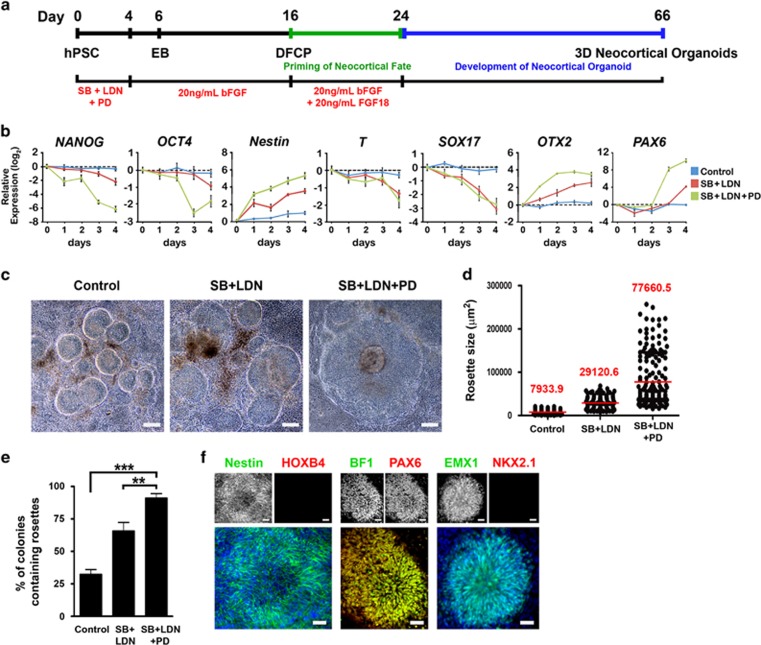Figure 1.
Combined dual SMAD and FGF inhibition induces efficient neocortical neuroectodermal conversion of hPSCs. (a) Schematic representation of the human neocortical organoid differentiation procedure. hPSC: human pluripotent stem cells; EB: embryoid bodies; DFCP: dorsal forebrain cortical progenitors; SB: SB431542 (10 μM); LDN: LDN193189 (0.1 μM); PD: PD0325901 (1 μM). (b) Time-course analysis of gene expression for pluripotency, early germ layer, and neural markers; n=3. (c) Phase-contrast images of NE rosettes derived from hPSCs at day 16. Scale bar, 100 μm. (d) Distribution of sizes of rosettes at day 16; n=128 for control, 142 for SB+LDN, and 176 for SB+LDN+PD, from three independent experiments. Red line indicates mean. (e) Analysis of percentages of colonies containing rosettes at day 16; n=9 independent experiments; total counted colonies: 506 for control, 573 for SB+LDN, and 490 for SB+LDN+PD. One-way ANOVA followed by Tukey's compromise post hoc test; **P<0.01 and ***P<0.001. (f) Neocortical NE generated from hPSCs. Expression of Nestin/HOXB4, BF1/PAX6, and EMX1/ NKX2.1 by immunocytochemistry at day 16. Scale bar, 50 μm. Data are shown as means±SEM in (b) and (e). Cell line: H9.

